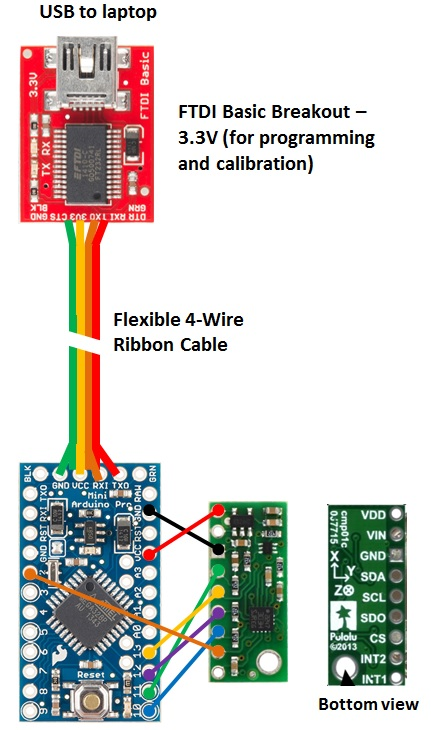For an electronic compass, the accuracy depends more on the
quality of the calibration that on the price of the components. Here is the design
of a low-cost compass developed around this idea.
The compass is based on the LSM303D chip which combines a
3-axis accelerometer and a 3-axis magnetometer. I used the Pololu carrier board
featuring this chip (9.95 US$).
The other component of the compass is an Arduino Pro Mini
328 – 3.3V/8Mhz from Sparkfun (9.95 US$). The Pro Mini communicates with the
LSM303D through the SPI bus, using drivers adapted from the PX4 Development
Team. The 2 components are hardwired together to keep a compact form.
The following picture illustrates the small compass besides
my Hi-Resolution custom compass previously described on this blog.
Here is the wiring diagram for SPI communication. The FTDI breakout is used to program the Pro Mini and to read the LSM303D raw data during the calibration step.
A low-cost marine compass (Part 2 – Software)
A low-cost marine compass (Part 3 - Calibration)




How does the accuracy of this low-cost compass compare to your high-resolution version from earlier?
ReplyDeleteA very good question, that I will try to answer next summer by installing them together in the boat. Even if the small compass has not the technical level of the other, I expect that after calibration, the results may be quite comparable and should not make a practical difference.
Delete